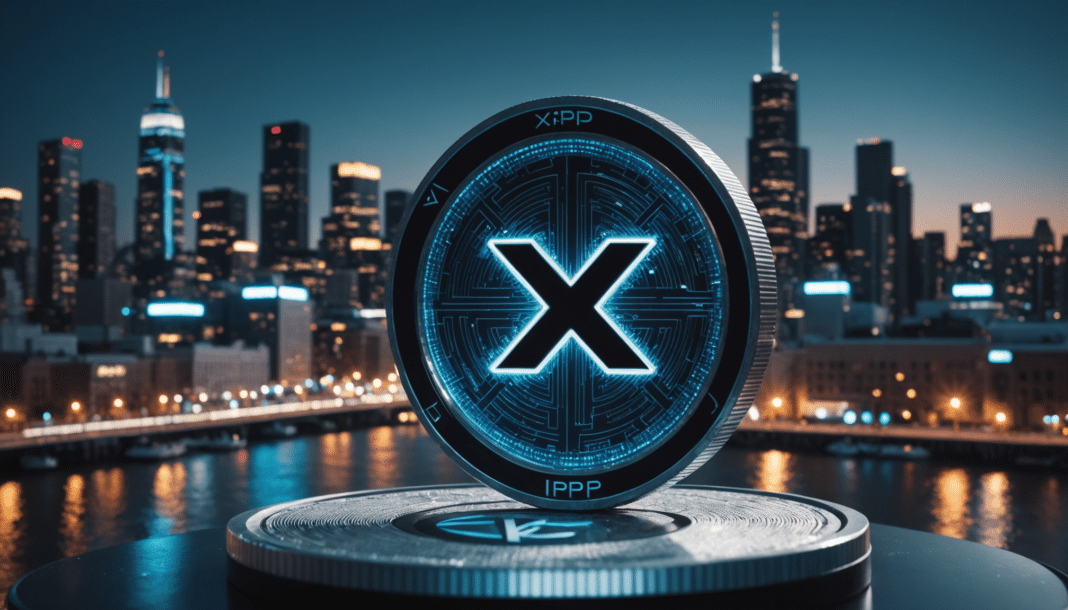Ripple is prioritizing privacy and scalability in its new strategy, sparking ambitious predictions for XRP price. RippleX’s Senior Director of Engineering, J. Ayo Akinyele, shares vision for the XRP Ledger (XRPL).
What to Know:
- Ripple is prioritizing privacy and scalability in its new strategy, sparking ambitious predictions for XRP price.
- RippleX’s Senior Director of Engineering, J. Ayo Akinyele, shares vision for the XRP Ledger (XRPL).
- Financial institutions are expected to use XRP as a reserve asset, potentially driving up its value.
As Ripple shifts its focus towards privacy and scalability, it stokes the embers of speculation about prospective growth in XRP’s valuation. This innovative strategy came to light when RippleX’s Senior Director of Engineering, J. Ayo Akinyele, publicly shared his ambitious vision for the XRP Ledger (XRPL).
Akinyele’s team is committed to developing privacy, scalability, and reliability features that cater to the needs of financial institutions. Their one-year roadmap includes rolling out zero-knowledge proofs that will streamline the processing of private yet compliant transactions.
Akinyele initiated his discussion by examining supply and demand dynamics. He pointed out that feeble demand results in assets being undervalued, while a surge in demand can spark dramatic price fluctuations.
The RippleX executive then drew parallels between the housing market and market appreciation. A solitary high sale price, he argued, can elevate the perceived value of all comparable assets, irrespective of new money entering the market. This phenomenon, referred to as “phantom value,” could potentially apply to XRP.
Akinyele’s third principle revolved around scarcity. He likened XRP to treasured artworks like the Mona Lisa, where limited availability and cultural significance fuel high valuations.
XRP was the next subject of Akinyele’s analysis. With less than 100 billion tokens in circulation and small amounts burnt with every transaction, XRP exhibits deflationary characteristics. Furthermore, the XRPL has the capability to issue other assets, including IOUs.
The Importance of Privacy
Directing his attention to financial institutions, Akinyele posited that key players like Bank of America, Chase, and Wells Fargo would not rely on public exchanges or on-demand liquidity like retail traders. Instead, they would construct private ledgers and treat XRP as a reserve asset, akin to gold.
11 – This is where it gets interesting because the road to $20K #XRP involves PRIVACY.
They’ve been very clear and honest with us –> #XRP was never meant for public retail trading.
We were the pitchers in warm up practice before the game begins.
Ready for the Big Leagues?
— Chad Steingraber (@ChadSteingraber) August 18, 2022
In Akinyele’s vision, banks would issue internal tokens backed by their XRP reserves without transferring their XRP holdings. In the meantime, institutional-grade liquidity providers would manage massive asset pools on private ledgers to facilitate cross-bank transactions.
This scenario was described as a digital arms race where banks and liquidity providers would vie to accumulate XRP. Moreover, Akinyele anticipates that most of Ripple’s escrowed supply would remain out of the open market’s reach.
Akinyele cautioned that once over-the-counter options are exhausted, demand would shift to public exchanges where the available supply is significantly smaller than presumed. Large quantities of XRP have already vanished permanently, including one billion tokens allegedly lost after banker Andrew Mellon’s death.
Related: XRP Price: $12M Max Pain for Bears
Estimates suggest that approximately 20 billion XRP are currently held on exchanges. Akinyele envisages an event where institutions deplete order books in a matter of hours. Sequential price points at $0.3, $0.4, $0.5, and $1 would sequentially disappear, triggering a price surge driven by arbitrage and private wallets. This, according to him, is how XRP could reach $20,000.
Quick Summary
Ripple is prioritizing privacy and scalability in its new strategy, sparking ambitious predictions for XRP price. RippleX’s Senior Director of Engineering, J. Ayo Akinyele, shares vision for the XRP Ledger (XRPL). Financial institutions are expected to use XRP as a reserve asset, potentially driving up its value.
Source
Information sourced from official Ripple publications, institutional research, regulatory documentation and reputable crypto news outlets.
Author
Ripple Van Winkle is a cryptocurrency analyst and founder of XRP Right Now. He has been active in the crypto space for over 8 years and has generated more than 25 million views across YouTube covering XRP daily.
Editorial Note
Opinions are the author's alone and for informational purposes only. This publication does not provide investment advice.


